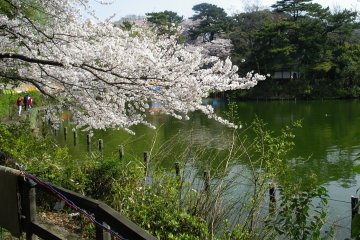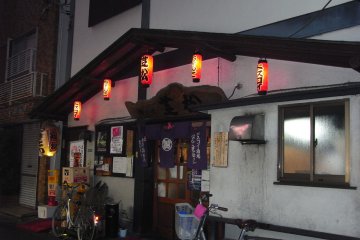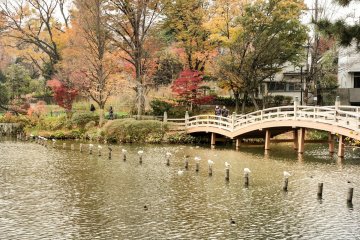The Tokyu Ikegami Line services 15 stations between Gotanda and Kamata, 10 of which are located in the diverse and attractive, yet often less frequented, Ota-ku. Here is a rundown of some of the best cultural sites, green spaces, and leisure spots to be found here in the south of Tokyo.
Senzokuike Pond Park
Named after the famous Buddhist priest Nichiren, who stopped to wash his feet here on route to Ikegami, this picturesque park has something for everyone. Whether you fancy heading onto the large pond in one of the swan boats for hire, or prefer a slow stroll along the shaded paths, you can appreciate the lovely views, which include a beautiful traditional wooden bridge. When you’re ready to take a break there are many spots where you can enjoy a picnic.
Access: Senzokuike Station
Sakura-zaka Slope
A ten-minute walk west of station you come across this famous spot densely planted with cherry blossom trees since the Taisho era. It became widely known when singer Masaharu Fukuyama released his chart-topping track “Sakurazaka” in 2000. The small Rokugo Irrigation Canal runs quietly nearby, and you are only a short stroll from Tama River here.
Access: Ontakesan station. More >
The Museum of the Life in Showa Era
This museum located inside a wooden building used as a family home until 1999 1996 introduces life in Japan during the Showa era (1926-1989). See how normal Tokyo residents lived in this period of dramatic cultural transition. The original retro interior complete with laid dinner table is a must see. Although the displays are in Japanese, you can pick up a leaflet in English, Chinese, Korean, or Spanish at the entrance.
Access: Kugahara station
Ikegami Honmon-ji Temple
This expansive temple comprised of numerous buildings, many of which were reconstructed following 1945, includes an original breathtaking 29.4 meter high five-story pagoda built in 1608 that is now designated an Important Cultural Property. To reach the temple, which is positioned up a hill, you will either have to climb 96 steps or take the elevator in the Ikegami Kaikan building right next to the temple.
Access: Ikegami station
Rengetsu Cafe
This quirky cafe hidden slightly off the beaten track is housed inside a beautifully renovated wooden building that was formerly a soba shop and traditional inn. Split across two floors, it is packed with cool retro furniture and antiques. Here you can enjoy a mouth-watering array of teas, coffee, savory meals, and homemade sweet treats.
Access: Ikegami station
Ikegami Baien (Plum Garden)
This impressive plum grove opened in 1978 boasts roughly 370 plum trees, including 150 white plum blossoms and 220 Japanese apricots that flower red. Situated at the former home and atelier of Japanese-style nihongapainter Shinsui Ito, visitors here can also relax indoors at the tea room. Visitors must reserve the tea room in advance so please call their office (03-3753-1658) for details. This gem is worth visiting throughout the year.
Access: Ikegami station
Kamata Hachiman-jinja Shrine
Kamata Hachiman-jinja Shrine is said to be built around 400 years ago. Although it was burnt down during the war, it was reconstructed in 1954. The shrine is currently under renovation to commemorate its 60thanniversary of reconstruction. Shinkosai, a festival where the enshrined god will parade the area, will be held in August 2018.
Access: Kamata station







